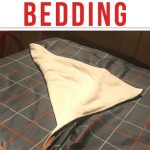Joints and Bedding Planes: Understanding the Differences
In the realm of geology, the terms "joints" and "bedding planes" often arise. While these terms may sound similar, they represent distinct features within rock formations. Comprehending the differences between these two structures is crucial for unraveling the geological history and processes that shaped our planet's crust.
Joints: Fractures with No Displacement
Joints are fractures or cracks within a rock mass that occur when the rock is subjected to tectonic forces or stresses. Unlike faults, joints do not involve displacement or movement of the rock along the fracture surface. Instead, they represent a break in the rock's cohesion without any significant shift. Joints can vary in orientation, forming various patterns such as columnar, polygonal, or sheet-like structures.
Bedding Planes: Boundaries Between Rock Layers
Bedding planes, on the other hand, are distinct boundaries or parting surfaces that separate individual layers of sedimentary rocks. They represent the original depositional surfaces that formed when sediments accumulated and were subsequently lithified into rock. Bedding planes reflect the depositional environment and the processes involved in the formation of the rock layers. They provide valuable information about past sedimentary processes, such as the direction and strength of currents or the nature of the depositional environment.
Key Differences
To summarize the key differences between joints and bedding planes:
- Formation: Joints result from tectonic forces, while bedding planes form during the deposition and accumulation of sediments.
- Displacement: Joints do not involve displacement, whereas bedding planes separate distinct rock layers.
- Relation to Rock Formation: Joints can occur in any type of rock, while bedding planes are exclusive to sedimentary rocks.
- Orientation: Joints can have varying orientations, while bedding planes typically parallel the original depositional surface.
Significance in Geology
Understanding the differences between joints and bedding planes is essential for interpreting geological structures and reconstructing geological history. Joints provide insights into the tectonic forces that have shaped the Earth's crust, while bedding planes offer a glimpse into past depositional environments and sedimentary processes. Together, these features contribute to a comprehensive understanding of the geological processes that have shaped our planet over time.

Rocks 3 What Are Joints And Bedding Planes Is Rock Permeability Teleskola
Field Photography Of Travertine Showing Two Joint Sets And Bedding Scientific Diagram

Rocks 3 What Are Joints And Bedding Planes Is Rock Permeability Teleskola
Rocks 3 What Are Joints And Bedding Planes Is Rock Permeability Teleskola

Energy And Geology A Level Geography Edexcel Revision Study Rocket

Characteristics Of Bedding And Joints Coal Scientific Diagram

Bedding Plane An Overview Sciencedirect Topics

Bedding Plane An Overview Sciencedirect Topics

The Identified Bedding Planes And Three Defined Joint Sets Scientific Diagram

Visual Assessment Of The Slope Highlighting Bedding Planes And Scientific Diagram








